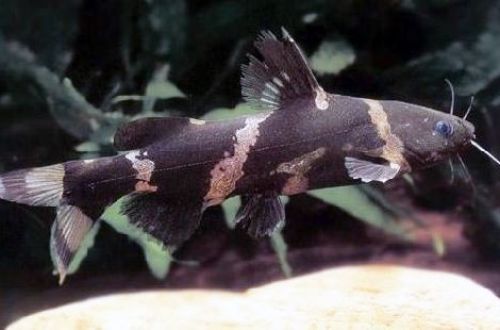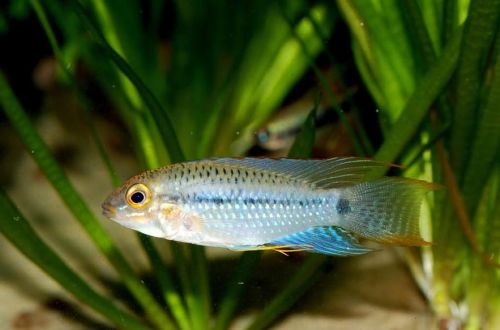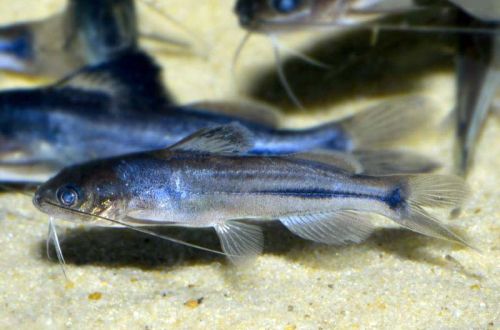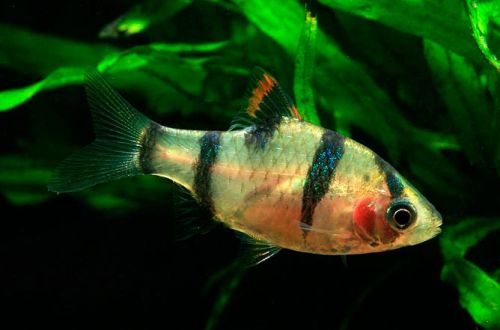
Siamese catfish
Asian bumblebee catfish, Siamese killer whale or simply Siamese catfish, scientific name Pseudomystus siamensis, belongs to the Bagridae family. Modest in size, a beautiful representative of Asian catfish, completely unpretentious to the conditions of detention, is combined with most fish of medium and larger sizes. The only difficulty can cause a diet consisting mainly of meat food.

Contents
Habitat
It comes from the vast basin of the Mekong River – the largest in Southeast Asia, from the territory of modern Thailand, Laos, Cambodia and Vietnam. Inhabits slow-moving waters among submerged trees and their roots. In the daytime, it keeps close to shelters, and at night it comes out in search of food.
Brief information:
- The volume of the aquarium – from 100l.
- Temperature – 20-26°C
- Value pH — 5.8–7.8
- Water hardness – soft to hard (5-25 dGH)
- Substrate type – any soft
- Lighting – subdued
- Salty water — a concentration of 1 teaspoon of salt per 10 liters is permissible
- Water movement is weak
- The size of the fish is up to 12 cm.
- Nutrition – protein (meat) diet
- Temperament – conditionally peaceful
- Keeping alone or in a small group in the presence of shelters
Description
Adults reach a length of about 15 cm. The main color is a dark chocolate hue with several vertical and diagonal stripes of a yellowish tint. A similar pattern is reflected in one of the popular names of this species “bumblebee catfish”. Sexual dimorphism is weakly expressed, males have a more contrasting coloration, and females are somewhat stockier than their partners.
Food
Refers to carnivorous species, partly can be called miniature predators. Siamese catfish prey on small fish, aquatic insects and their larvae, worms, crustaceans, etc. In a home aquarium, it can adapt to accepting fresh meat and frozen foods such as freshwater shrimp meat, mussels, pieces of white fish, earthworms.
Do not serve meat of animal origin, they are poorly digested and can cause digestive problems.
Maintenance and care, arrangement of the aquarium
The optimal size of the aquarium for one catfish starts from 100 liters. Since this is a shy and nocturnal inhabitant, the design should provide for dim lighting and the presence of shelters (snags, ceramic pots, plastic tube trimmings, etc.). When keeping together with other catfish, provide several areas with shelters so that each of them can create their own territory. The substrate is any soft, plants are not required, but if desired, you can use some shade-loving unpretentious plants and mosses.
In the process of placing the equipment, place the heaters away from the hiding places and, moreover, do not combine them so that the catfish do not accidentally overheat. Otherwise, the Asian bumblebee catfish is completely unpretentious and is able to successfully adapt to various water conditions, it is found in nature even in brackish systems.
Behavior and Compatibility
If you do not keep with small fish, then there will be no problems with compatibility with other species. Catfish goes well with large and medium-sized cyprinids, peaceful cichlids and many others. As for intraspecific relations, there is competition for territory and skirmishes are possible if there is a lack of space.
Breeding / breeding
In nature, the mating season begins with the arrival of the rainy season, when there are significant changes in the composition of the water, which in turn is an incentive for spawning. It is almost impossible to reproduce natural cycles in a home aquarium without the use of hormonal injections used in fish farms.
Fish diseases
The main cause of health problems is an unsuitable living environment. If the first symptoms are detected, you should check the water parameters and the presence of high concentrations of hazardous substances (ammonia, nitrites, nitrates, etc.), if necessary, bring the indicators back to normal and only then proceed with treatment. Read more about symptoms and treatments in the Aquarium Fish Diseases section.





